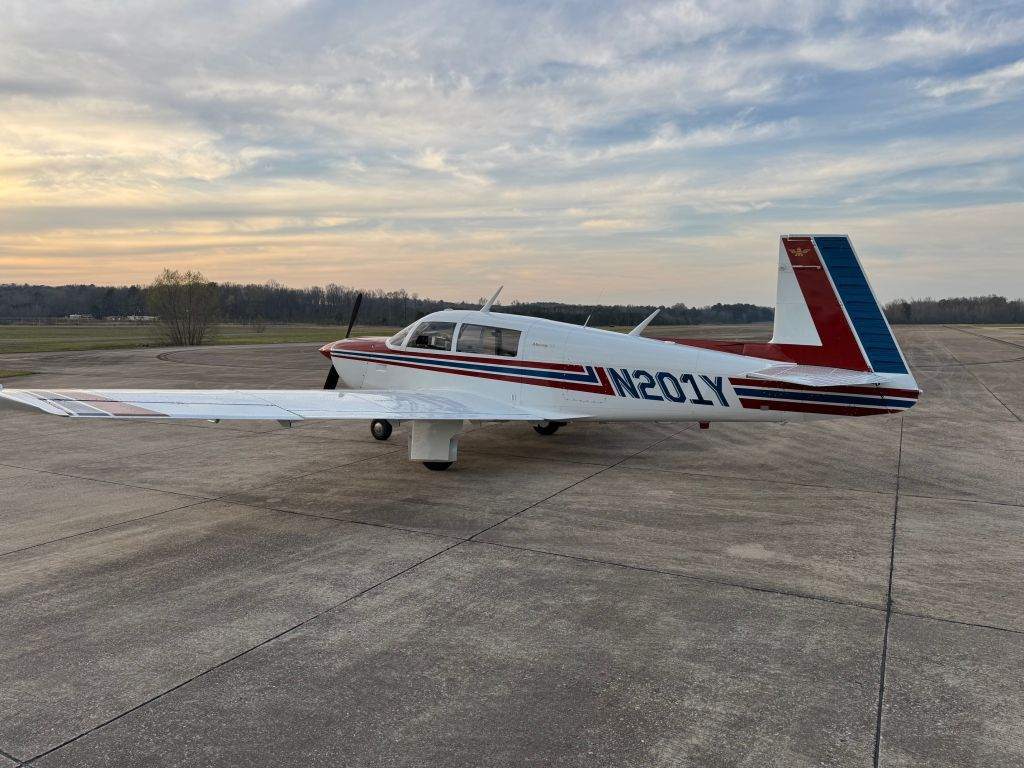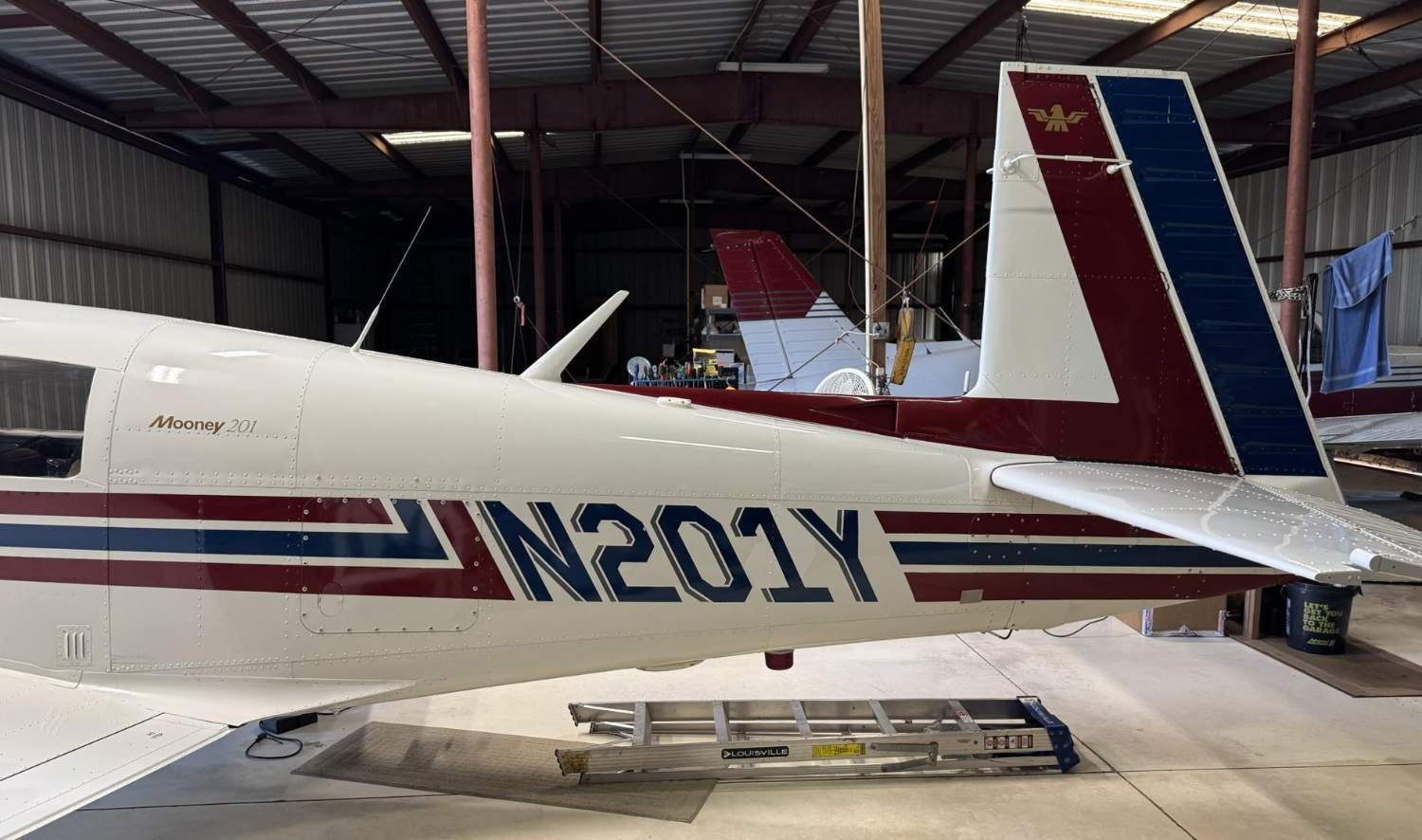-
Posts
3,182 -
Joined
-
Last visited
-
Days Won
8
Content Type
Profiles
Forums
Blogs
Gallery
Downloads
Media Demo
Events
Everything posted by 0TreeLemur
-
The instructions from the FAA said that the FSDO will issue a new Airworthiness Certificate. The FAA form 8050-64 giving me permission to use the new tail number says the following: "SIGN AND RETURN THE ORIGINAL of this form to the Civil Aviation Registry, Aircraft Registration Branch, within 5 days after the special registration number is placed on the aircraft. A revised certificate of aircraft registration will then be issued. Obtain a revised certificate of airworthiness from your nearest Flight Standards District Office." Returned signed form. I tried calling the nearest FSDO. Left a message. Followed their maze online. Sent an e-mail. Waiting to hear back. I would guess they are waiting for the registration update to appear online. That regs say that a copy of that signed Form FAA 8050-64 along with my old AC placed in the aircraft makes the aircraft airworthy until the FSDO issues the revised AC.
-

Warm start more difficult than hot start? What gives?
0TreeLemur replied to 0TreeLemur's topic in Modern Mooney Discussion
According to the video above, the normal state for a Lycoming IO-360 before hot or warm start is flooded. I did not realize that. Don said that the flow divider acts like a coffee "percolator" and it drains fuel through the injectors after shutdown. Based on that I believe that by switchiing on the boost pump I didn't prevent cavitation, I caused the flooded condition to persist longer than I needed to. Note to self: boost pump not used for hot or warm starts. I was over thinking it. -
FAA permission to use N201Y received in February of this year. April 1 I took off the tape after painting the shadow on the new "1"s. Turned out pretty good I think!
-

Warm start more difficult than hot start? What gives?
0TreeLemur replied to 0TreeLemur's topic in Modern Mooney Discussion
When you run the boost to fill the lines, what throttle position do you set? Half? -

Warm start more difficult than hot start? What gives?
0TreeLemur replied to 0TreeLemur's topic in Modern Mooney Discussion
I've started dreading them too. -
When on a trip and I stop to refuel and do it quickly, I have no trouble with hot start. Just use the boost pump to pressurize the fuel system, crack the throttle, crank the engine and advance the mixture. Viola! Running engine. If I go someplace for fuel and take my time re-fueling, visit with someone, enjoy a nice evening, the IO-360 doesn't want to start. CHT's cooled down to maybe 120-160F. The procedure above does not work. It takes five or six tries. With the obligatory starter cool down periods, it takes 5 minutes. When this happens I get out and look for fuel dripping out of the exhaust pipe. Nope. If I waft some air from the vicinity of the exhaust and smell it, it smells like fuel. I don't prime the engine. When I pressurize the fuel system the mixture is at idle cut-off. Anybody have any idea what's going on here? Thx. Fred
-

Debriefing after possible ATC blunder today
0TreeLemur replied to DXB's topic in Mooney Safety & Accident Discussion
I've been in the same kind of situation. It is important to ask yourself if there is anything you could have done differently that would have put you in a better position and be less susceptible to their whims. The word "unable" is a great one. I had to use that in January when I got vectored as if I was in the pattern and they turned me right into the FAF while still too fast and high. At first I was a little more than annoyed at what I perceived as an attempt to slam-dunk me. After I went around again at 90 knots and landed, it occurred to me that I should have slowed down earlier not knowing what kind of vectors I was going to get. -
N201Y flies again! When we bought our J in 2022 it came with tail number N202Y. Right next to the sticker that says "Mooney 201", it just struck me as not quite right. Last fall on a whim I checked the FAA N-number web site to see if maybe N201Y was available and it was! After a few weekends of sanding, taping, painting, it's done. Yesterday I reprogrammed the transponder and flew to HAB for some $4.30/gal go juice. N201Y just rolls off the tongue, and I never once said N202Y. Here she sits on the ground at HAB. Showed up on flight aware as N201Y. This tail number previously was worn by a J model that was seemingly "retired". The total cost was $10 to the FAA, $110 for some two-component paint, $50 for miscellaneous sanding/painting supplies plus about 40 hours of my labor. Not quite done- I need to sand some edges and paint the shadow on the new "1"s.
-
I'm looking at reconfiguring my Avidyne AXP-340 xponder. The isntallation manual says "The Mode S Address is a 24 bit number issued to the aircraft by the registration authority for the aircraft. These addresses are usually written as a 6 digit hexadecimal number," I guess I can use the same one? Does anyone know? I looked at the FAA "assignment of special registration numbers" form that they sent me, and it makes no mention of that.
-
Matt at Engravers.net quoted me $10. Told him to proceed. It will meet or exceed my specs.
-
I bought two a couple of years ago from Maxwell.
-
Ok. I'll contact him. Thx.
-
Gimme a break. I haven't got to that yet! I used 2K paint, which is supposed to cure for 20-30 days before cutting/polishiing. I can't paint the shadow until after that step.
-
yes, but they don't have letters 0.4" tall.
-
I've got a Brother labelmaker that's nicer than that - But I want an engraved label that is 2" wide, 3/4" high with letters 0.4" tall. Thickness 0.025" - 0.05". White letters on matte black finish.
-
I found them online. I ordered something from them before. Good company. But, I just need a little 2" x 3/4" engraved label with a sticky back. Probably cost $3.00 from the right place. A place with "Aircraft" in their name will probably be 10 times that...
-
-
Changing tail number on airplane. Need new engraved plastic label for panel. Anyone know a place that makes such things? Thx.
-
Last fall I reserved N201Y. The FAA approved the change so I spent today painting white where I'd sanded off portions of a "2". My J had N202Y, which is ok, but kind of like a vanity plate that just doesn't quite make sense. Tomorrow I paint the blue portions of the "1".
-
-
For incompressible flow (M<0.3), streamline curvature explains >95% of the pressure distribution on an airfoil, with viscosity (vorticity) playing a minor role. Downwash has very little to do with lift produced by a wing. Lift results from either angle of attack and/or asymmetry in the airfoil itself. An asymmetric airfoil like the one on our favorite airplane in normal cruise has 0-degree angle of attack! How much downwash do you think that is that causing? As Skip pointed out in the wind tunnel photo above, which is a symmetrical airfoil at a high angle of attack, the net vertical velocity component around it very nearly zero. In the case of a symmetric airfoil at 0-degree angle of attack, the lift is zero because the streamline curvature is the same on both upper and lower surfaces. But as the wind tunnel photo shows, angle of attack greatly modifies the flow field and results in a lot more streamline curvature above the airfoil than below it. That's all there is to it. No magic. Once you get into the compressible flow regime, then the magic starts to appear along with a few demons.
-
One of my favorite views of lift generation in action. Streaklines in a wind tunnel at an angle of attack near stall. Newton's second law F=ma written perpendicular to the streamlines does a better job of describing the physics that produces lift better than any other equation. It clearly shows that streamline curvature produces a pressure gradient in the direction opposite of the radius of curvature. The minus sign indicates that the pressure decreases in the direction pointing towards the center of curvature, the n direction on the figure. The wind tunnel observation also shows why our stall detectors are placed where they are.
-
By coincidence I tried this exact test just Sunday. I had a turn of 290 degrees programmed in the IFD540 just to see what it would do. I expected it to anticipate the turn. With the Aspen in GPSS mode, KFC150 A/P in HDG mode. To my surprise the IFD took me over the waypoint and turned left 290 degrees. It seems that there is still some limit in the IFD software, where beyond a certain angle it requires a flyover. Good to know. I tried again and anticipated the turn using the heading bug in non-GPSS mode, and that works. Threads from the past like this one are very useful.
-
For some reason in my J CHT #2 is always about 20F cooler than the other three. Its the coolest cylinder. Always. One challenge I sometimes have in winter LOP ops is keeping CHT #2 above 300F. This happens up higher where it is colder and max power WOT is less than 65%. When that happens I'll run a little ROP just to keep that CHT up.








